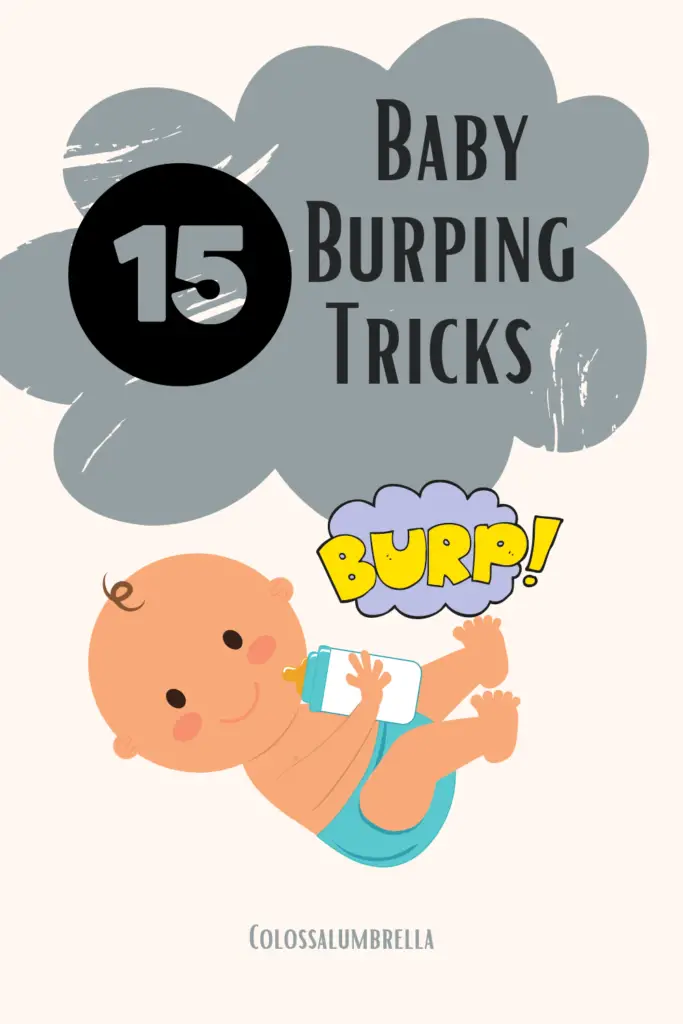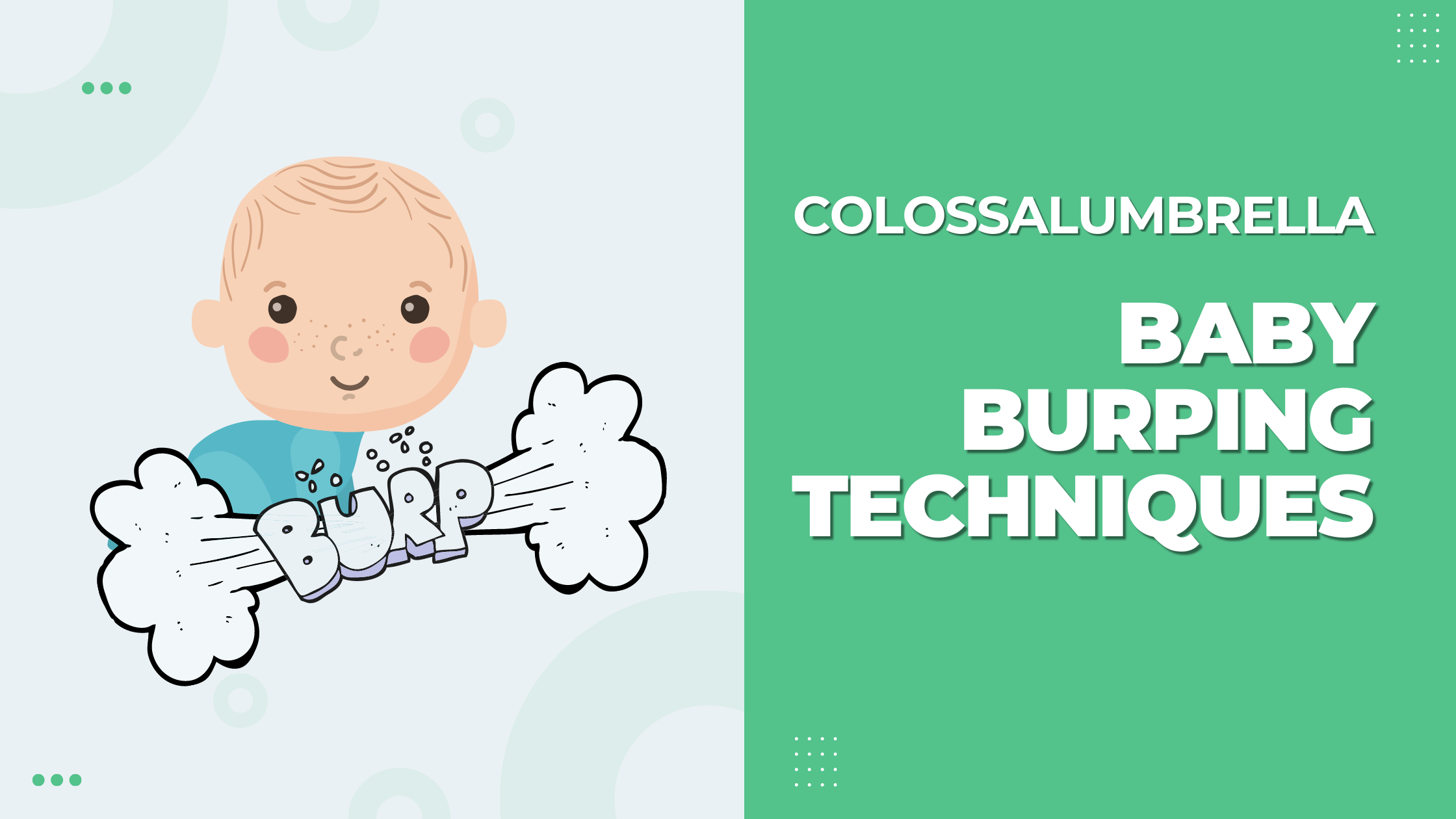Contents
Burping your baby is a crucial but often challenging part of parenting. When I first became a parent, I thought I knew all about baby burping tricks. But when it came time to actually burp my baby, I found myself struggling to release those pesky gas bubbles. If you’re a new parent or are struggling with baby burping, you’re not alone. Luckily, there are several effective baby burping tricks that can help make this task easier and more comfortable for both you and your baby. In this blog post, I’ll share some of the best baby burping tricks I’ve learned along the way, so you can confidently navigate this essential part of parenting.
When to burp a baby
Knowing when to burp your baby can be crucial for their comfort and well-being. While some babies may not require burping after every feeding, others need to be burped frequently to avoid discomfort and excessive gas. Here’s what you need to know about when to burp a baby, whether they are breastfed or bottle-fed.
Breastfed Babies
When it comes to breastfeeding, babies are less likely to swallow air than when bottle-feeding. However, it is still important to burp your baby after each feeding. You can do this by sitting your baby upright with their head on your shoulder or in a sitting position while supporting their head. Gentle pats on the back or rubbing your baby’s back in a circular motion can help bring up any trapped air.
Bottle-Fed Babies
Bottle-fed babies tend to swallow more air than breastfed babies, so it’s important to burp them more frequently. The American Academy of Pediatrics recommends burping a baby after every 2-3 ounces of formula or every time they switch breasts if you’re feeding them pumped breast milk. Similar to breastfed babies, you can hold your baby in an upright position, supporting their head and rubbing their back to help them release any trapped air.
It’s also important to pay attention to your baby’s cues. If they show signs of discomfort, like pulling their legs up to their chest, squirming, or crying during or after feeding, it may be a sign that they need to be burped. Additionally, burping your baby can help prevent spit-up and reflux, which can be especially uncomfortable for a baby.

15+ Best Baby Burping Tricks for new parents
Being a new parent comes with many joys and challenges, including figuring out the best way to burp your baby. Burping is an essential part of feeding, and it helps to prevent discomfort and excessive crying caused by trapped air in the baby’s tummy. However, getting your little one to burp can sometimes be tricky, especially if they are a gassy baby. Here are the best baby burping tricks to help you get that much-needed burp out.
- Start with the right feeding position – The first step to getting a good burp is to make sure that your baby is in the correct feeding position. If you are breastfeeding, hold your baby with their head and neck in a straight line with their body. If you are bottle-feeding, hold your baby upright and make sure the bottle is positioned so that the nipple is always full of milk to prevent your baby from swallowing too much air.
- Keep your baby upright – After feeding, hold your baby upright against your chest or over your shoulder. The American Academy of Pediatrics recommends keeping your baby upright for at least 10-15 minutes after feeding to help prevent excess air from entering their digestive system.
- Use gentle pats or pressure -Gently patting or applying slight pressure to your baby’s back can help to release trapped air. Use the heel of your hand to pat or apply gentle pressure between the shoulder blades. Alternatively, you can hold your baby’s tummy against your chest with your hand and gently rub or pat their back.
- Try different burping positions -There are many different techniques to try, such as holding your baby in a semi-upright position or laying them on their tummy on your lap. Some babies may prefer one position over another, so try a few and see what works best for your baby.
- Use a burp cloth – Always keep a burp cloth handy to catch any spit-up or wet burps. It can also be helpful to place the burp cloth over your shoulder to protect your clothing.
- Consider gripe water or gas drops -If your baby is particularly gassy or colicky, you may want to consider using gripe water or gas drops. These products can help to relieve discomfort caused by excess gas bubbles in the digestive system.
- Keep an eye on your baby’s tummy -Watch for signs of discomfort, such as pulling their legs up to their chest, arching their back, or crying during or after feeding. If your baby seems uncomfortable, try burping them again or changing their position.
- Keep a food diary -If you are breastfeeding, it can be a good idea to keep a food diary to track what you eat and how it affects your baby. Certain foods can cause excess gas or discomfort, so eliminating them from your diet may help.
- Use a pacifier – Some babies are comforted by sucking, even after they’ve finished feeding. Offer a pacifier to your baby after a feeding to help soothe them and encourage burping.
- Use white noise – Soft background noise can be soothing to babies and may help them relax and burp more easily. You can try playing white noise or using a sound machine during feedings.
- Massage your baby’s belly – Gently massaging your baby’s belly in a circular motion can help move trapped gas and encourage burping. Make sure to use a gentle touch and avoid putting too much pressure on your baby’s tummy.
- Try different burping positions – There are many different ways to burp a baby, so try out a few and see what works best for your little one. Some common positions include holding your baby upright with their head on your shoulder, sitting your baby on your lap and supporting their chin and chest with one hand while you pat their back with the other, or lying your baby face-down across your lap and patting their back.
- Less air during feedings – If your baby is taking in too much air during feedings, it can make burping more difficult. To prevent this, make sure your baby’s head is elevated during feedings, and take breaks to burp them every 2-3 ounces if bottle-feeding or switch sides if breastfeeding.
- Burp frequently – If your baby is particularly gassy or colicky, try burping them more frequently during feedings, every 1-2 ounces if bottle-feeding or every 5-10 minutes if breastfeeding. This will help release any excess air and prevent discomfort.
- Place baby in a comfortable position – Make sure your baby is in a comfortable position when you burp them. They should be supported and relaxed, whether that means sitting in a rocking chair, on your lap, or lying on their back or tummy.
- Good news for breastfeeding moms – Breastfed babies tend to take in less air during feedings compared to bottle-fed babies, which means they may not need to be burped as frequently. However, it’s still important to take breaks and burp them occasionally to release any trapped air.
- Mom’s diet – If you’re breastfeeding, what you eat can affect your baby’s digestion and gas. Try keeping a food diary to identify any triggers and avoid them, such as dairy or spicy foods, to help reduce your baby’s discomfort.
Common mistakes to avoid while burping a baby
Burping a baby is an important aspect of feeding, as it helps to prevent gas buildup, colic, and discomfort. However, there are common mistakes that many parents make while burping their babies. Here are some of the most common mistakes to avoid-
- Not burping enough: Sometimes, parents assume that their baby doesn’t need to burp or that they’ve already burped enough. However, it’s important to burp your baby after every feeding, as this will help prevent gas buildup.
- Burping too hard: While it’s important to burp your baby, be careful not to do it too hard. Excessive burping can be uncomfortable for your baby and may even cause reflux.
- Not changing positions: Many parents assume that there’s only one way to burp a baby. However, there are several different positions you can try, and changing positions can help release trapped air.
- Not waiting long enough: Sometimes, parents don’t wait long enough for their baby to burp before assuming they’re finished. It’s important to give your baby enough time to burp before stopping.
- Not using a burping cloth: Spit-up is a common occurrence when burping your baby, and not using a burping cloth can result in messes on your clothes and furniture.
- Overfeeding: Feeding your baby too much can lead to excessive air intake, making it harder to burp your baby. Be mindful of the amount of food your baby is consuming.
- Not paying attention to your baby’s cues: Your baby may show signs of discomfort, such as fussiness or crying, if they need to burp. Pay attention to these cues and make sure to burp your baby if they seem uncomfortable.
Key Takeaways
burping your baby is an important aspect of feeding, and it can help reduce discomfort and prevent excessive gas. Remember to pay attention to your baby’s cues, choose the right position, and use gentle but effective techniques to get the job done. Avoid common mistakes, such as over-patting, and always stay patient and calm. With these tips and tricks, you’ll become a pro at burping your little one in no time.
Citations
- American Academy of Pediatrics. (2021). Burping, Hiccups, and Spitting Up. HealthyChildren.org. Retrieved from https://www.healthychildren.org/English/ages-stages/baby/feeding-nutrition/Pages/Burping-Hiccups-and-Spitting-Up.aspx
- Altmann, T. (2017). Baby Basics: Your Month-by-Month Guide to a Healthy Pregnancy, Infant Development, and Baby Care. American Academy of Pediatrics.
Post for New Moms
I would stay connected and keep you updated with parenting tips, pregnancy guides, creative ideas, easy crafts, and Free Printables. Subscribe to Colossalumbrella to get new ideas delivered to your inbox. Follow me on Facebook, Pinterest, Twitter, and Instagram.
Shop
I would appreciate you support to help me run this blog. I run a small affiliate shop, which means that if you click on the link and make a purchase, I may earn a commission at no additional cost to you.
Disclaimer: The content of this blog is for informational purposes only and is not intended to be a substitute for professional medical advice, diagnosis, or treatment. Always seek the advice of your physician or other qualified healthcare providers with any questions you may have regarding a medical condition.

4 thoughts on “15+ Effective Baby Burping Tricks for Happy Infants”
Comments are closed.